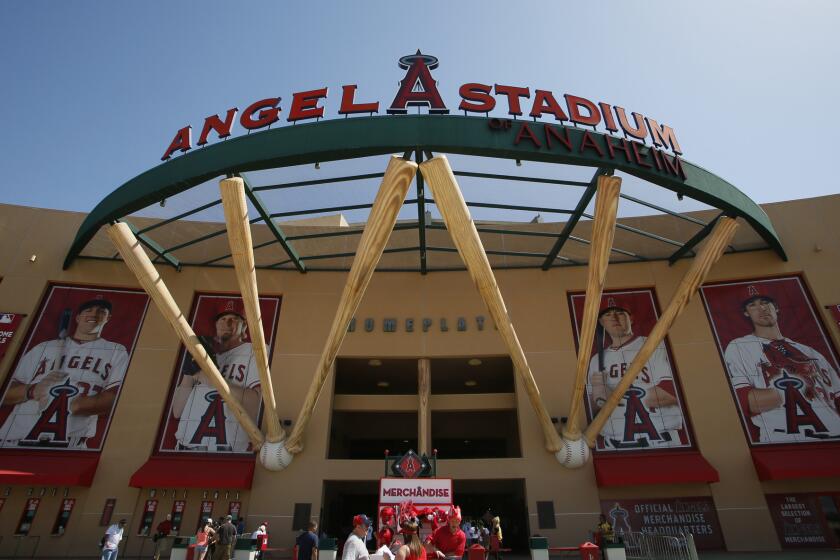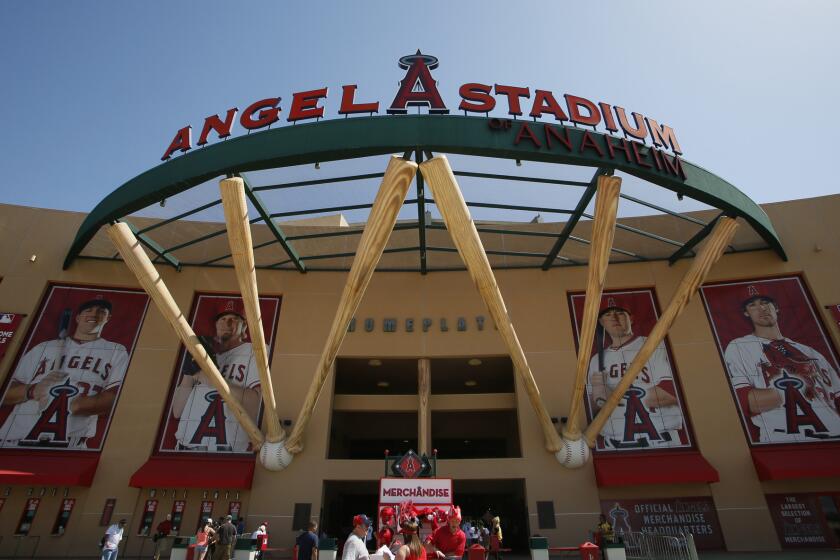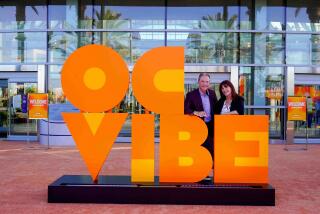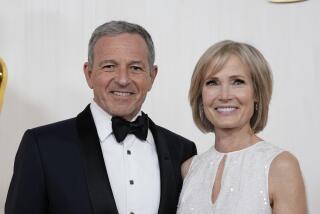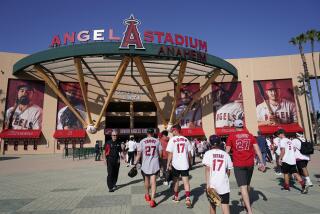Did Anaheim get a fair price for the Angel Stadium property?
- Share via
The Anaheim City Council did not meet in person Tuesday, so there were no ceremonial handshakes or fist pumps, no obligatory photo opportunity of council members donning Angels caps and smiling. Still, the mayor was jubilant.
“I really want to celebrate this evening,” Anaheim Mayor Harry Sidhu said.
The seven-year saga of what to do about a 55-year-old stadium was over. The team’s owner would buy the city-owned stadium and the adjacent parking lots, refurbish or replace Angel Stadium at his cost, and convert more than 100 acres of surrounding asphalt into an urban village that would generate millions in tax revenue for the city every year. The Angels would stay in Anaheim through 2050, with options to stay through 2075.
Yet two of the seven council members voted against the deal, citing fierce community opposition that focused on a central issue: Did the city sell the land for a fair price?
Councilwoman Denise Barnes congratulated Angels owner Arte Moreno and his newly formed development company for striking “an incredible deal for yourselves.” Barnes also chided Sidhu: “When you say ‘Anaheim First,’ you must mean Los Angeles Angels first.”
The council votes 5-2 to sell the stadium and surrounding land to Angels owner Arte Moreno in a deal designed to keep the team in town through 2050.
A city-commissioned appraisal valued the property at up to $500 million. The sale price was $150 million in cash, with another $170 million in credits to entice Moreno’s company to include nearly 500 units of affordable housing and a seven-acre park within the project.
Lew Wolff, a prominent Los Angeles developer and the former managing partner of the Oakland Athletics, was an informal advisor to Moreno during his negotiations with Anaheim.
“There is just no logic in the world that this isn’t a fair deal for everybody involved,” Wolff said.
The $500-million figure attracted attention from critics who wondered why the city would sell the land at what appeared to be a substantial discount. However, that figure was based on what the city might get if it kicked out the Angels, razed the stadium and sold the property’s 150 acres.
For two decades, Anaheim had pushed its “Platinum Triangle” vision: a live-work destination distinguished from generic urban settings by what the city called “world champion entertainment” and “entertainment-related development associated with Angel Stadium.”
The City Council last year again bet on that vision. The council surrendered its right to evict the Angels after the 2020 season, giving up short-term leverage as it pursued a long-term deal.
Instead, the council reinstated a lease that would have allowed the Angels to control development on the property through 2038. That, Wolff said, would have prevented the city from getting anywhere near the $500 million estimate had it put the site up for bidding.
For one, he said, a development company would bid based on present value — the concept that a dollar in 2020 is worth more than a dollar in 2038, when the company would get control of the land. In today’s dollars, the $500 million a company might be willing to pay in 2038 could be worth less than $200 million today.
Secondly, had a developer made such a bid, that still would have left open the question of the Angels’ long-term future. If a development company offered to replace the city as owner of the stadium, the company might well have discounted its bid — so as to reserve funds to upgrade the stadium, or to offer to split development profits with Moreno in the hope he would do it.
Finally, Wolff scoffed at the notion that the land is all that valuable. Since 1996, the city has had the right to sell a 40-acre slice of the stadium parking lot, where the Angels only had veto rights over housing projects. The city pitched the land to Disney, and to the NFL. Both passed. The city retained Forest City, a nationally prominent developer, but the company ultimately said it could not locate enough tenants to make a project viable.
“It isn’t gold on the streets there,” Wolff said.
Ultimately, he said, the Angels are the most logical developer.
“They’re more likely to invest in the stadium and the activities around it,” he said.
In addition, Wolff noted the city struck its deal with Moreno before the coronavirus crisis. Had the City Council rejected the deal and put the land up for bid, the pandemic-induced recession in industries critical to the success of the development — hotels, restaurants and retail — could have forced Anaheim to wait years for a better bid.
In a statement, a spokeswoman for Moreno’s management company noted that its development costs are expected to run into the billions of dollars.
“It is important to understand that the purchase price is only a part of the overall investment,” spokeswoman Marie Garvey said. “In order to realize this vision, it will take a multibillion-dollar investment in Anaheim that will result in positive economic and employment benefits for decades to come.”
Wolff, a key figure in the revitalization of downtown San Jose, joined the A’s in 2003 to lead their search for a new ballpark, then became managing partner in 2005. He became chairman emeritus in 2016, meaning he pursued that new ballpark for 13 years without success.
If the Angels leave Anaheim, it could include a $100-million to $300-million penalty, according to a new proposal.
He explored options close to the Oakland Coliseum, but the joint ownership of the Coliseum by the city and Alameda County complicated matters. He pitched a ballpark in suburban Fremont, which was opposed by community groups, and in San Jose, which was torpedoed when the San Francisco Giants refused to negotiate over their territorial rights to that city.
“I did the best I could,” Wolff said. “I didn’t have the cooperation that Anaheim displayed here. I would like to say it was a problem with the county and city, but the county told me on my first day up there, ‘How do we get out of sports?’”
The county this week sold its 50% share of the Coliseum site to the A’s for $85 million, which would value that land at $170 million. The property is roughly the same size as the Angel Stadium site.
The A’s currently are pursuing a waterfront ballpark along industrial land in Oakland. In August, the team quietly removed from its website the projected 2021 date for groundbreaking and 2023 date for opening the ballpark.
Wolff said the A’s also ought to consider duplicating at the Coliseum site what the Angels are doing in Anaheim: revitalizing an aging stadium and replacing the surrounding parking lots with a ballpark village, taking advantage of easy access via freeway and mass transit.
“I think you can create your own environment there,” he said. “And, frankly, I think the Bay Area is a stronger market.”
More to Read
Go beyond the scoreboard
Get the latest on L.A.'s teams in the daily Sports Report newsletter.
You may occasionally receive promotional content from the Los Angeles Times.

